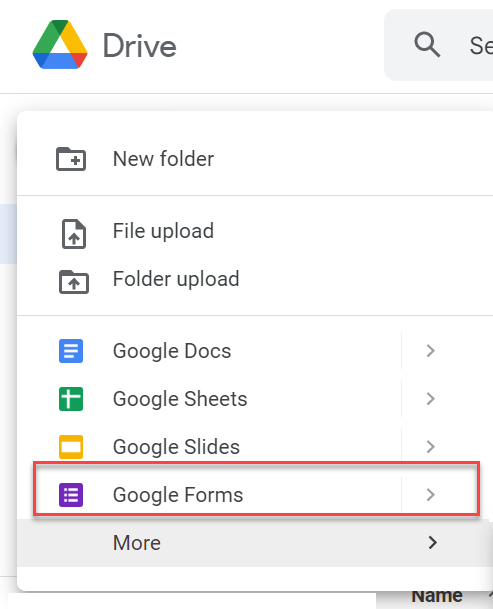As a beginner in website design, I would have thought it necessary to have some coding or design background to create my own website. Of course, I remember the days of Myspace where we all had our own "websites," using the most basic of HTLM codes to customize wallpaper or music. But Google Sites makes it even easier than those days of the past, with templates, simple blocking, options to upload images directly using a Google Image search, and even embedding links, all with a simple click of a button or two.
You should know, a Google account is required to create a site using Google Sites. If you need assistance with setting up a Google account you can find information on that here. Once you have an account set up you will need to access your Google Drive. From here, you can create a multitude of documents, forms, or even a site. To create a website, simply click the "New" button, hover over "More," and click on "Google Sites."
From here a new tab will open where you can begin by selecting a theme, deciding on how you want your content laid out by selecting the blocking, or even choosing a template from those available. Add additional pages based on your company needs.
Once your content has been added, you will want to ensure that your customer base has way to contact you to request your services or ask questions. But why leave that to blanket emails or LinkedIn messages? If you know there is certain information you will require before you even send your first response, you can leverage Google Forms to create a seamless communication strategy with your customers. Again, you will need to access your Google Drive to create your Form. This time, we will select "Forms" after clicking the "New" button.
Once your form opens, name the form, type your question, and add the options you want your customer to select from. These can be multiple choice or open text. You can add as many questions you want by clicking the "+" to the right of the screen.
You can publish your website at any time, and update as often as you see fit. But one final step I suggest is to create your own domain, and again Google has made this incredibly easy and affordable. Access your settings by clicking the gear symbol on your Google Sites, then select "Custom domains" follow the step by step instructions by clicking the "Start setup" button.
And there you have it, your own website in less than day! To see the one I set up, please visit LecuyerConsulting.com or click this link. Let me know if you have found any other easy features available handy by leaving a comment.






Wow, I wish we had access to these tools when we started our small business in the early 1990's.
ReplyDelete